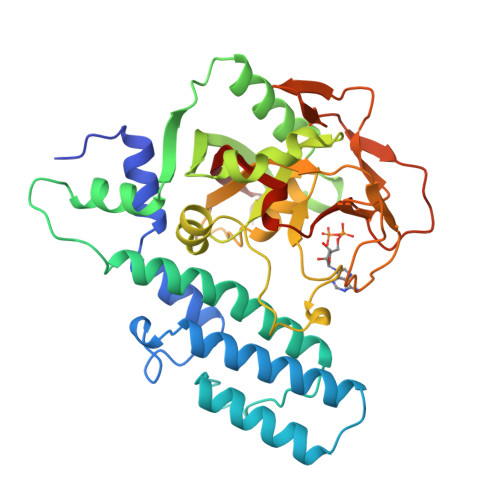The mechanism of the elongation and branching reaction of poly(ADP-ribose) polymerase as derived from crystal structures and mutagenesis.
Ruf, A., Rolli, V., de Murcia, G., Schulz, G.E.(1998) J Mol Biology 278: 57-65
- PubMed: 9571033
- DOI: https://doi.org/10.1006/jmbi.1998.1673
- Primary Citation of Related Structures:
1A26 - PubMed Abstract:
The binding site for the acceptor substrate poly(ADP-ribose) in the elongation reaction of the ADP-ribosyl transferase poly(ADP-ribose) polymerase (PARP) was detected by cocrystallizing the enzyme with an NAD+ analogue. The site was confirmed by mutagenesis studies. In conjunction with the binding site of the donor NAD+, the bound acceptor reveals the geometry of the elongation reaction. It shows in particular that the strictly conserved glutamate residue of all ADP-ribosylating enzymes (Glu988 of PARP) facilitates the reaction by polarizing both, donor and acceptor. Moreover, the binding properties of the acceptor site suggest a mechanism for the branching reaction, that also explains the dual specificity of this transferase for elongation and branching, which is unique among polymer-forming enzymes.
Organizational Affiliation:
Institut für Organische Chemie und Biochemie, Albertstr. 21, Freiburg im Breisgau, D-79104, Germany.

















